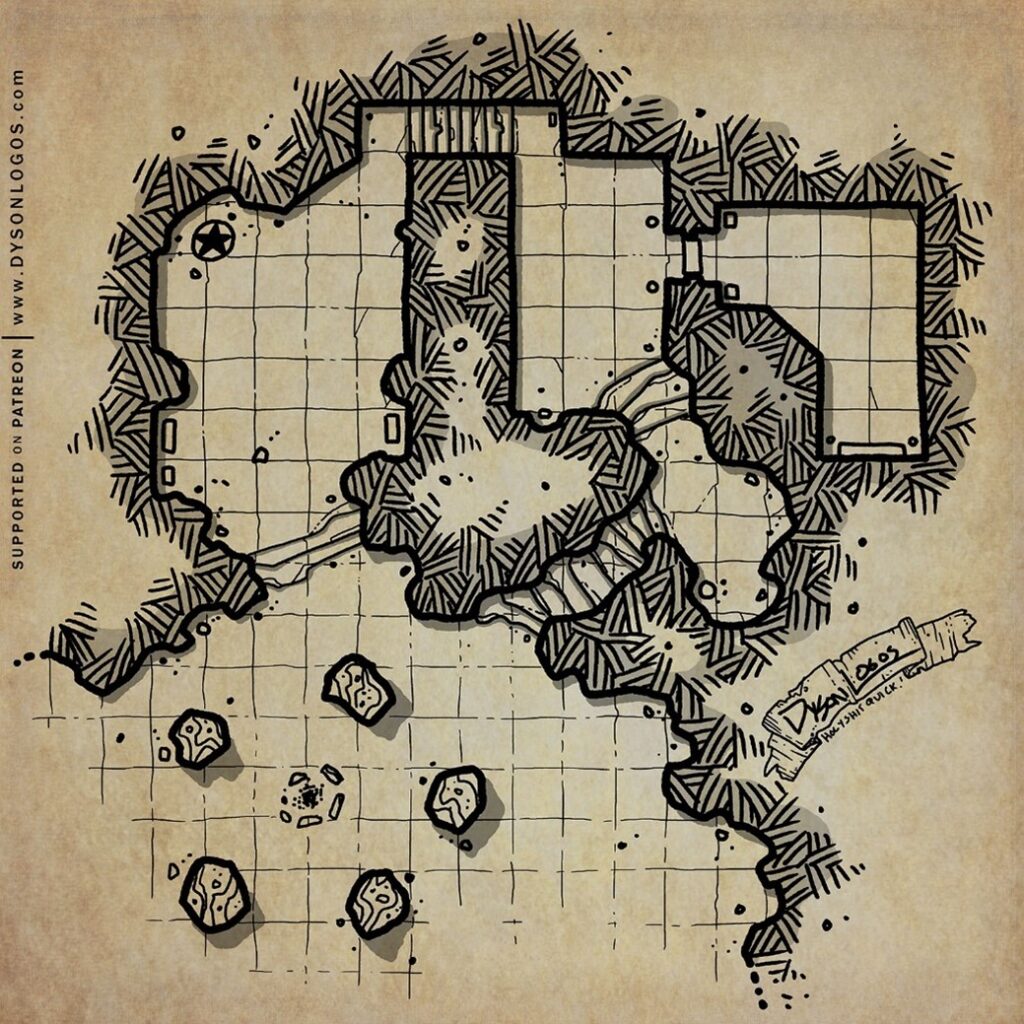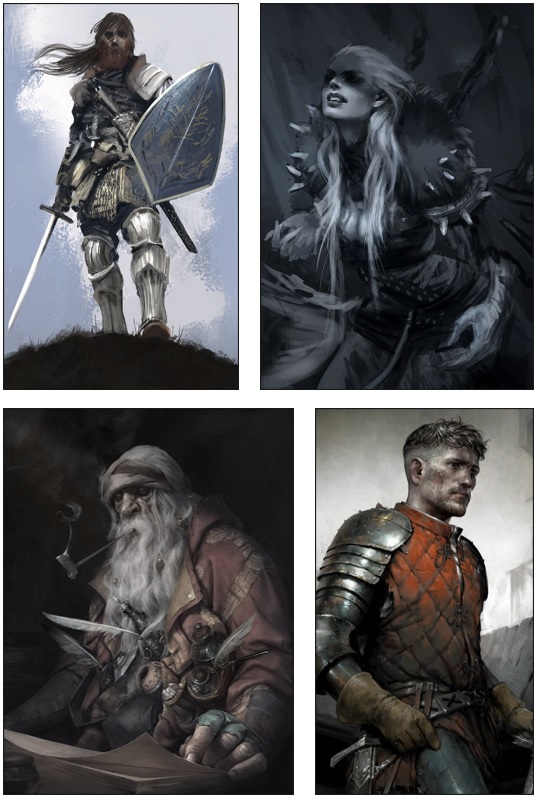Here’s the Darkurthe Legends session from Lincon! Featuring several rather willing & able players, whom I hope to meet with again because they embraced many setting and characterization features, including asking questions, and they were genuinely interested in the formal but savage combat rules.
There is one tragedy, which is that the final events of play did not get recorded (the app shut itself off, mysteriously). I included a short spoken piece to summarize some important points. Specifically, If it had just been about some more combat, that would be no big deal, but in fact those final events were quite rich in character development and the birth of many possible new events.
Not only did the decisions arise directly from the events of the fight, but they were not negotiated or pre-scripted even through casual table-talk – it was all raw play, with more and more recognition of each character’s changing viewpoint across us as we went along. One could really see how “uh oh, this heir we’re seeking is a were-wolf” and “what do these snotty knights think they are, telling me I need to places with them and do what they want,” transformed into mutual respect and a desire to accept the unexpected on everyone’s part. Uzzak, too, gained far more presence among the characters with his own point of view, which I appreciate as Jörgen had conceivably received less play-action than he should have and he stuck it out to keep playing ably toward his vision of the character anyway.
I will also be the first to tell you that I did mess up several rules along the way, which I describe in the “afterward” section. The kobolds were even more dangerous than I played them, because I missed a couple of times when their combat ability could have increased, and because I didn’t remember the attacks-per-round restrictions on the big weapons, based on on Strength.
Here are the characters:
And here’s map I was using, by Dyson Logos.

The following file included some important charts I’ve made or copied from the game, and I should have used them more in play. I’m especially sad that I did not show them the planetary orbit and the distinctive, unearthly seasons.


4 responses to “When “dark” was excellent”
That game looks awesome! It’s exactly up my alley – Dark fantasy? Excess? Moral Ambiguity? Detailed and flavorful combat? Weird evocative cultures? Religion? I hope there is more to come!
The characters that come out of this style of fantasy are “cool”, like in a Brom illustration way. I’m not usually a “make a cool badass”, however it’s perfect for this genre. A kind indulgent excess that doesn’t quite fall into the gross-out grindhouse pastiche or misery tourism – but is still dark, gothic and ass kicking.
I liked how the combat ordering shifts and is responsive, it has a sense of momentum and choreography that helps keep combat from a purely “game-y” activity to a colorful and crucial part of play. It’s a vital aspect of characterization to me. It pains me when I see people place “combat” and “roleplaying” in different boxes.
I wish there were more games like Darturthe Legends out there.
We’re on the same page about this, generally. I can’t quite find the right words to say why – given the real people’s inclination – it works so easily with this game, whereas many others slide off into slick fake edginess or into embarrassing Darhk Cheez.
One core feature may be the acknowledgment of what I mentioned, that human input and commitment is necessary. For example, the method for arriving at the descripive Characteristics, e.g., that Missande is a Bastard, Smart, Rude, and Friendly, is only partly and voluntarily random. You roll if you want, keep it if you like it, choose what you want, and there’s no limit. This part, anyway, has no systemic structure which “makes it good.” You have to make it good.
The combat has a similar feature which might be easier to understand (in terms of reading it here instead of trying it in play): the text is very clear that details which are judged as immediately-relevant, per action or event, are expected to be factored into the next moment. A good example is the uncertain terrain of the elf’s remains, partly exhumed by Missande, once people starting walking on them while fighting. How much such things turn into numbers as well as descriptions is also a matter of moment’s judgment, and I like the way the text says, “do this,” and also, “never mind how, you figure out how, that’s your job.”
The authors seem uniquely cognizant that a game text cannot play itself, and maybe that’s why the edgy-dark stuff works: because we make it the way it works for us.
“The authors seem uniquely cognizant that a game text cannot play itself, and maybe that’s why the edgy-dark stuff works: because we make it the way it works for us.”
That right there is the key difference between offering inspirational material versus a complete idea or overly codified trope.
It is a tricky balance. If a text doesn’t offer enough concrete concepts, folks may have to finish a design themselves which may lead to dissonance with uncommunicated assumptions. However, when an author has an overly rigid idea of how a genre story should play out and/or what the aesthetics and details are, play can wind up being an engine for pastiche (which can be extremely frustrating if you disagree with the author).
Darkurthe seems to strike a good balance, not so little the game feels vague or uncommitted and not too much as to dictate the groups expression of fantasy.
(to note: everyone has their preferences for how little is too little or much is too much as I said – its a tricky balance)
I’d like to contribute the notion that it might be not about a balance or a compromise, and thus a question of quantity, but about providing the right material, saying enough to provide a charged backdrop, with lots of potential un-resolved, but with the necessary missing half for the humans at the table to fill in.
I think the best visual art also has this quality, as it
demands interpretation on the part of the viewer (think “Wanderer above the Sea of Fog”), and my guess would be that’s why Ron uses pictures e.g. to set up The Pool.